E-commerce is here to stay. No doubt.
Digital buyer penetration will exceed 65 percent of global internet users in 2021. So more people are shopping online now than ever, and it’ll continue to grow.
You probably know that starting and running an ecommerce business isn’t a walk in the park.
There are lots of steps, decisions, and hard work involved in launching and running an e-commerce business that succeeds.
In this interview with E-commerce Business School’s Ann Sieg, we explored her tested and proven steps for building and running an automated and borderless e-commerce business.
Key Takeaways from This Interview
Here’s what you’ll get from this interview:
- Amazon is the best great place to start an e-commerce business with very little capital and marketing budget
- Launch from Amazon, and then grow into other marketplaces
- Starting your e-commerce journey outside of Amazon is like learning to swim from the deep end of the pool
- Those who succeed fast get close to their mentors, ask a lot of questions and take a lot of action
- Successful e-commerce is built on three pillars: cash flow, systems, and assets
- Amazon will continue to dominate e-commerce more
- When choosing products to sell, fall in love with the deal and pay attention to demand, not the product itself
My Conversation with Ann Sieg
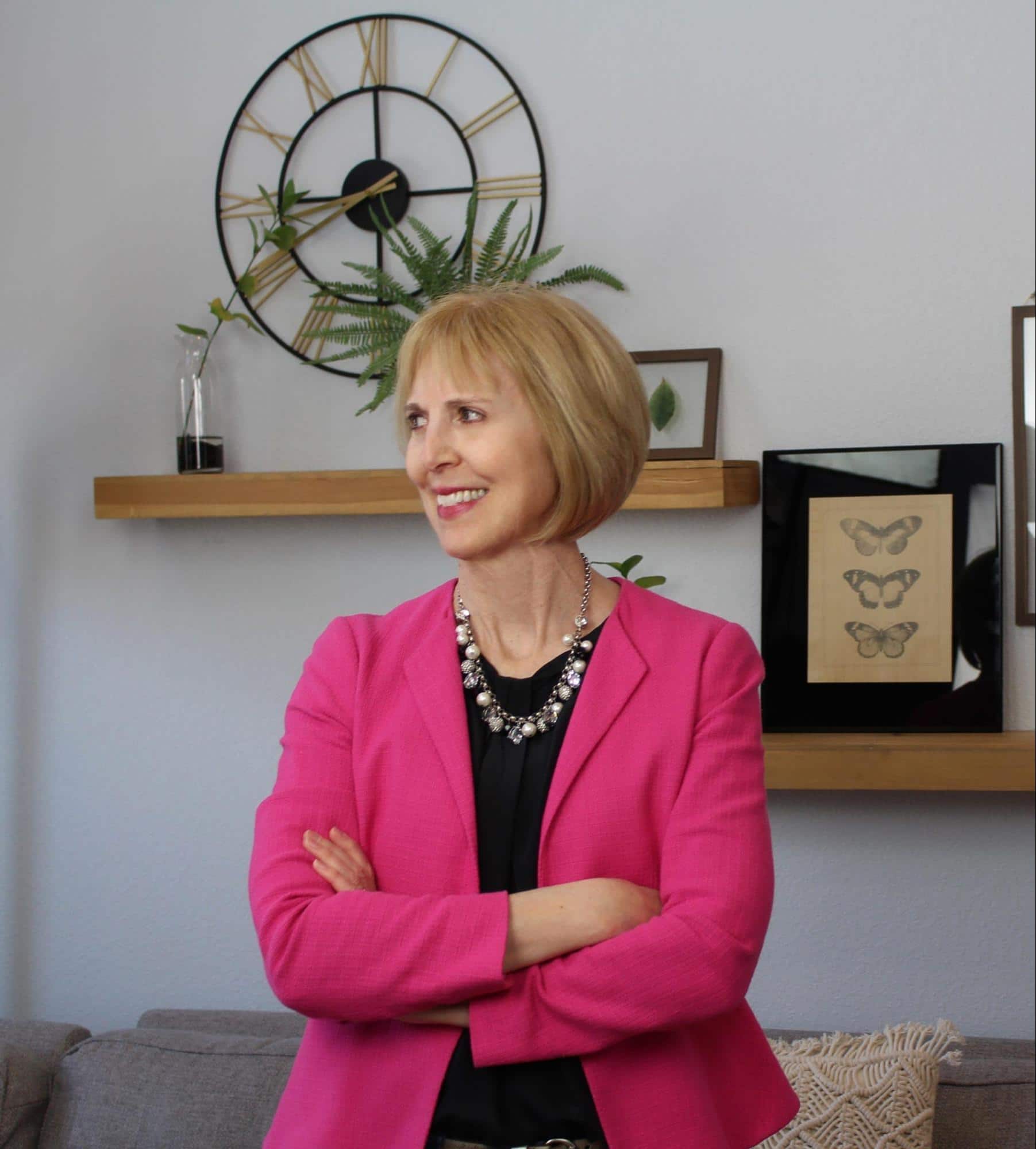
1. Why do you teach your students to start their online businesses on Amazon instead of other platforms, like Shopify?
The main reason we do that is speed to market, speed to results, getting success. With Amazon, they have the funnel already built. They do all the advertising. They do all the marketing. They’ve got all the customers, they have prime buyers with credit cards on file in their system.
Converse to Shopify, you’re going to have to learn and master all of advertising and marketing.
And I’ve been doing advertising and marketing for 15 years.
It’s a lot to learn and master, and have your advertising actually cashflow so that you’re not in the blade. That’s the main reason. You’re going to be making money on Amazon within two weeks. It doesn’t take long.
I guess it really depends on if someone wants to go the long play. It really is down to their own business objectives. If they want to do the long play, at least understand you’re going into the deep end of the pool. And it’s going to take a lot longer because you have to go into a skill-building mode.
If you start at the shallow end of the pool with Amazon, and there’s a lot of different ways to approach Amazon. You’ve cut the learning curve dramatically and can get to results so much more quickly.
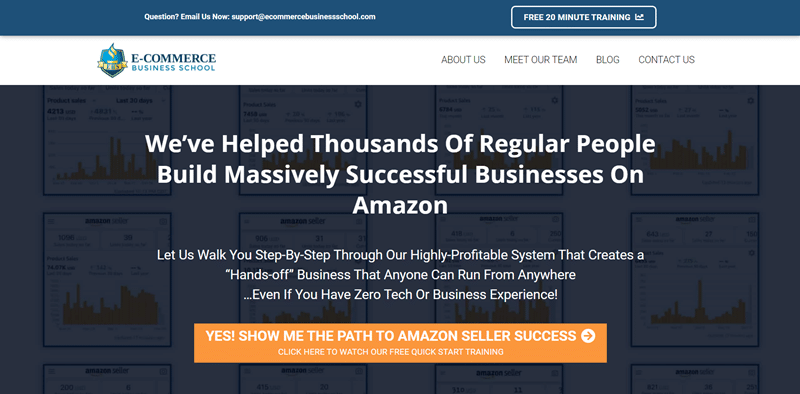
2. When your students master how to sell on Amazon, do you advise them to begin to expand to other platforms, or do you think they should stick with Amazon only?
A hundred percent. I do recommend it.
On the whole, I teach people to own their own business assets and to always be moving in increasing control of their business. That’s going to happen more through Shopify than through Amazon.
I’ve got one of our master trainers, he’s been doing it for 12 years with no problem.
Maybe you’re still happy with Amazon and you can make millions that you don’t need to evolve and go on to Shopify. But the difference is, with Shopify, you’re going to actually own the email list unless you’ve joined Merchant Fulfilled.
But, with FBA, they own the data. You’re not ever going to have that list and the customer list is worth a lot of money.
When you build a Shopify business, you are going to build:
- A brand
- Proprietary products
- Private label, and
- An email list that you own
It really depends on the vision that the person has for their business. But because I’m really big about building business assets that puts you into a more secure place. Albeit, people are selling their Amazon businesses as well. It can work really well either way.
3. What do you invest in? where do you get your knowledge from? And where do you focus your attention?
That’s a really good question.
For one, I’m the marketer of the company. I’m the founder of E-commerce Business School and I market the company — the business.
For myself, I invest in quite a lot. When I said Shopify is harder and you have to do your own advertising marketing, that’s what I do.
We’ve found in the course over time — for me, it’s been over 15 years online — that our corporate team does better when we’re being mentored. We do better with a “done with you” process rather than outsourcing to an advertising agency.
We just simply don’t get much success with an advertising agency. I think it’s because they’re not as invested in who we are and what we do. And, they don’t know all the subtleties and nuances of our business and they can’t run anywhere near as fast as when we do it internally.
So, right in this phase of our business, we have a:
- YouTube mentor
- A scale mentor, and
- A CFO mentor.
And I’m not talking about e-commerce right now. This is relative to helping to scale our existing business.
Now, when it comes to the Amazon space, I have a fleet of trainers and coaches, and they all invest in their own training. We also give some allowance for more training for them as well.
There are just so many Amazon training programs out there. And how do you stay on the cusp, et cetera? We have followed Ezra Firestone, the Shopify guy. That’s not really what we encourage for people starting out, but he’s been a very remarkable e-commerce seller. I follow him more for marketing though.
I follow marketers, it’s what I do. And I am keeping a pulse on the e-commerce space in general, what the offers look like out there? How do we differentiate? et cetera But for me personally, I am on the cusp, always on the cusp of learning new marketing.
4. In one of your videos, you broke down the activities for a “successful e-commerce” into three pillars — Cash flow, systems, and assets. You seem pretty confident in these pillars. Can you tell us about them?
Yes. Our most widely watched video is the three pillars of becoming a success. We start with cash flow, which is to kickstart your business and keep it going because the converse is when you have to draw on your personal funds to get your business going. That’s not a very ideal situation.
Instead, we want to get people into cash flow as fast as humanly possible, and it can happen very quickly so that they’re not leaning into their family resources. Their business is feeding them very, very quickly. And I’m talking like in two weeks they can be profitable. It doesn’t take that long, especially with Amazon.
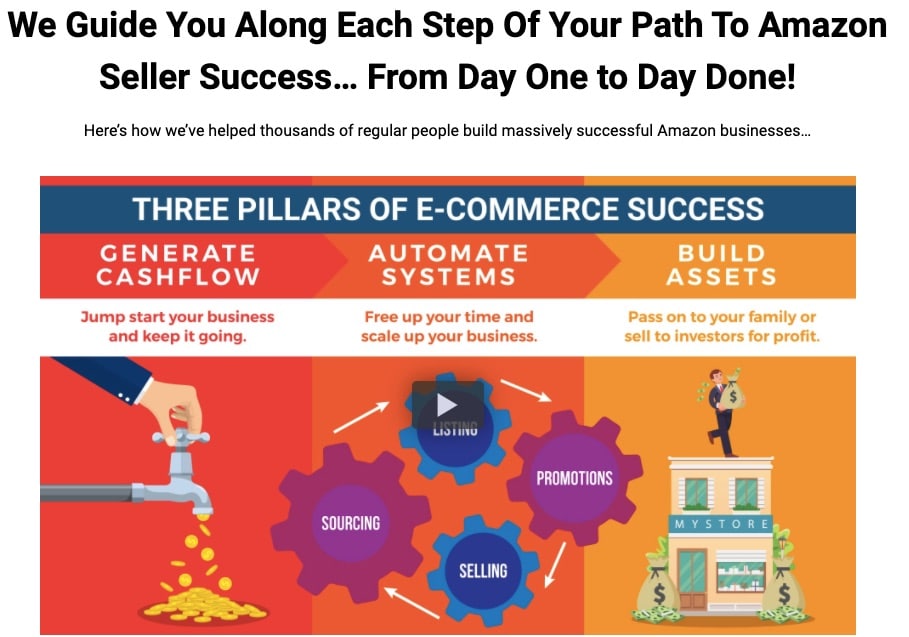
Then systems; any good business advisor or anyone who’s buying a business are going to look for standard operating procedures. What are your systems? Because they don’t want to buy a glorified mess. They want to buy something that is highly structured and that conceivably, they could bring their A-Team in, if they so choose, to come in and run those systems for them.
When you think about a franchise like McDonald’s et cetera, that’s what people are buying. They’re buying the systems. Systems are so critical because, otherwise, you’re starting from scratch.
From trial and error until if you happen to have that personality disposition of actually creating a system. Not everybody is wired as well to create systems.
“We have created the systems and we give those systems to our members. Otherwise, why have a mentor? Why have a teacher? The teacher is to get you into results as fast as humanly possible. That’s Systems.”
Then about the assets part. Again, any good business advisor will say, begin with the end in mind.
Meaning:
- You’re going to grow this business, but what are you going to do with it?
- Is it a legacy business to hand off to your kids?
- Is that you’re going to sell it for a profit?
So, begin with the end in mind.
In building an asset, not everybody thinks this way about business, that they can then sell it. And people do sell Amazon businesses at a very nice price. what does a would-be investor want to know or have in place in your business asides from, obviously, profits? What do they have? That’s the assets. Your team is your asset.
We teach this in a 90-day sprint; to have the systems and set up a team to run the systems for you. That’s what makes a business attractive. That would-be buyer doesn’t want to buy a glorified job working for 14, 16, 18 hours a day. They want to buy a system that’s got people running those systems for them, and that’s a very attractive business proposition.
5. You have students like Danita Zanrè. What trends do you see with your most successful students, especially those that succeed in a very short time?
I’ll have to say from a personality perspective — I’m going to talk about that and then I’m going to talk about what they do. They know how to put hands to plow and they go in and they do it by virtue of going through our training. They also get coaching. That isn’t across the board.
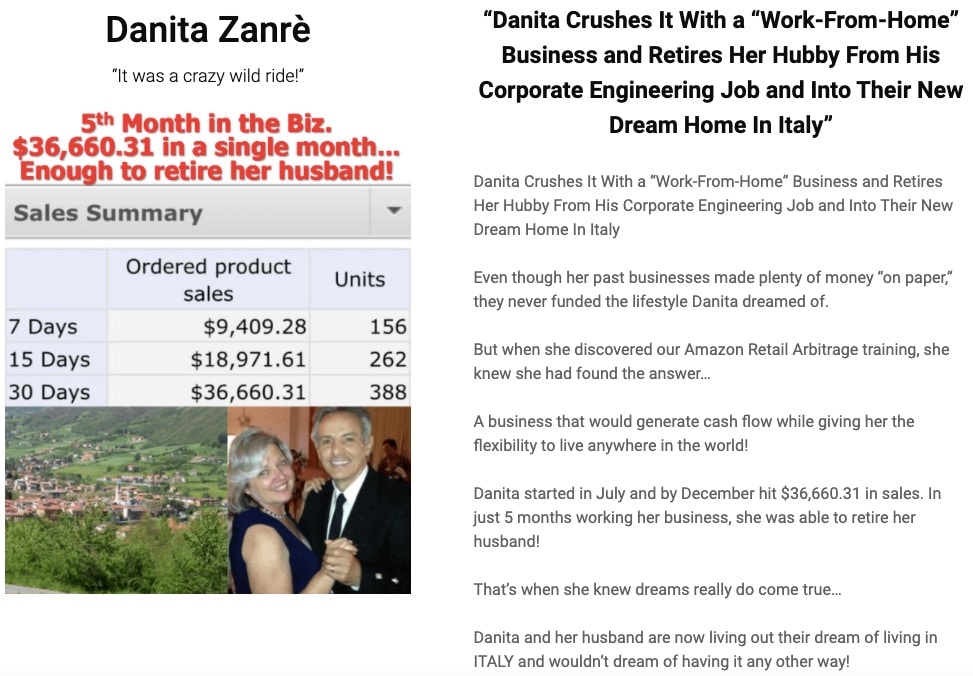
Everyone took advantage of coaching, but Danita, for example, got coaching right out of the gate. For one, she’s been a business owner herself as an email consultant, a corporate consultant for like 20, 25 years. So, she understands the value of what it means to tap into someone else’s blueprint.
Someone else has gone before them, so it’s a value understanding. But it’s also an implementation. And they also understand when they hit a snag, it’s not game over it’s: ‘Oh, okay, I’m going to have to solve this problem. Let me go get some help.’
…they don’t throw in the towel at the first instance of something going wrong. Guaranteed, no matter what business you’re in, something’s going to go wrong. The resourceful people get help and they overcome their challenges. They’re also consistent in their efforts. They don’t treat it like a hobby; they’re showing up every day.
How do they automate? They hire virtual assistants. They utilize third-party services and software that help free up their time to expand and diversify into additional business models.
They’ll, for example, sell in other countries beyond the US. They sell on multiple marketplaces, like eBay, Etsy, Walmart, et cetera. And they often evolve and create their own brand and website as part of that progress as well.
But for that beginning success, like Danita you mentioned, she was able to retire her husband in the fifth month of her Amazon business. And I think she did 40 grand in sales and our members get their own 30 percent profits, some upwards of 50 percent profit. That’s pretty darn good.
She did by steadfastness and she liked it. She liked the business. It wasn’t like it was chewing rocks and spitting out dirt. She actually enjoyed doing her business, which compelled her forward.
And enjoyment comes from making money. When you’re making money. It’s actually kind of fun.
6. There’s this debate of “going with the product I love” vs. “going with data.” I did my product research and I found this product that sells a lot vs I really, I really feel passionate about this product. What’s your take on this?
You know, people become passionate about a product. And then there’s a more pragmatic approach as well. ‘I just want to make sure it’s selling. I don’t really care if I’m in love with the product.’
Well, in real estate, they say “don’t fall in love with the house, fall in love with the deal.” The same is true about selling products on Amazon. ‘Fall in love with the deal.’ In other words, ‘are all the metrics lining up’ versus, ‘but I’m so passionate about this.’
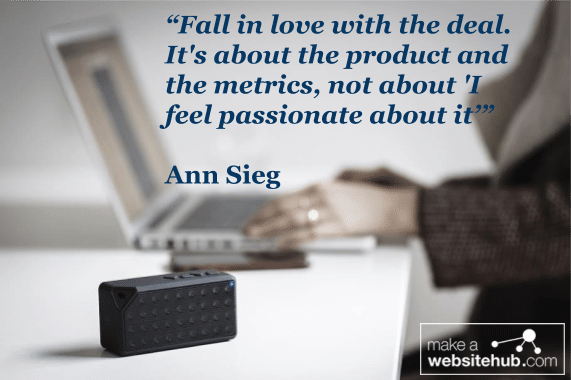
I’m going to give you a classic example. We teach local retail arbitrage, which is using your phone with the Amazon seller app, and you can scan products and flip them for a profit. You have your smartphone with the Amazon seller app, and all you’re doing is scanning the UPC code on the product.
The scan will look for that data in the Amazon catalog and tell you
- The profitability
- Your FBA fees
- How many sellers
- What’s the rank
- What’s the sales velocity, et cetera.
One day I was scanning, I was in the clearance section and there was this (to me personally) very ugly looking purse. It was so glittery and I’m like, this is a dumb product to be selling.
But I remembered, ‘don’t judge a product by its cover, scan it.’ As it turns out, it was selling quite well on Amazon and it was profitable.
This was a perfect case that speaks to passion. I thought it was ugly. Well, that’s me. Someone else thought it was the coolest thing.
7. So, global retailers are investing in Artificial Intelligence (AI). Juniper Research predicted that it’d reach $7.3 billion yearly by 2022. How are you incorporating AI or AI tools into your business automations?
Well, the only thing that we use pragmatically or practically right now is an automated repricer. You can buy different software where it will reprice according to the fluctuations in the marketplace on Amazon so that you don’t take a hit.
“Our most successful students tend to automate and diversify their e-commerce businesses.”
It does it automatically for you rather than you having to go into your seller central account and constantly be monitoring. The repricer will do it, and you can set the parameters, ‘but I don’t want to take a loss, so I’m going to price it at this.’ That’s doing it automatically.
Beyond that, no. Amazon does plenty of AI. Walmart does AI. AI is an absolutely exploding industry.
But within our membership, we don’t develop software for them in that regard. We’re not software developers, other than utilizing, pointing them, and directing them to tools that will help them. And one is the automated repricer.
8. I see you offer multiple courses. The e-commerce world is always changing; how often do you update these courses? How do you know when it’s time to make these updates?
I have to say, that’s a challenge. Literally, just this weekend, one of our trainers was recreating one of our starter basic courses. It’s called Amazon basic, and it’s just how to set up their account.
They worked on it and come Monday, Amazon made all sorts of changes in their back office, and this was a PDF.
My point is you’d almost have to be changing every other week. Like Facebook — I’ve been in the backend of my Facebook ad manager account and literally seen the back office change right in front of my eyes.
And, that’s an issue.
With the training, just now we updated one of our courses. Two of our trainers could see that it was getting outdated. But we’re also in constant delivery.
The way we deal with this is we give updates. Otherwise, we would be recreating our courses. It always depends on how big the change is.
That’s what we teach our members. Fall in love with the deal; it’s about the product and the metrics not about ‘I feel passionate about it.’ Unless you’re willing to throw passion to the wind and lose money.
Typically the change is mostly to do with the Amazon back office. That’s the change. Because we could teach them how to go with the ever-changing Amazon product marketplace; that’s a given, that’s always changing, and that’s constant. We’re always teaching them that because that’s just the nature of the beast.
But, in terms of training where we’re showing the back office and oops, Oh man, we just finished that video on Friday and Monday, it’s already changed. We don’t do it constantly.
And the way we deal with that is we give updates, both on our group mastermind and in the back office, we’ll have notice of updates. And we do a training every Saturday called Saturday Morning Live, and we’ll give updates there as well.
9. Some of our readers have never sold on Amazon. If such a person got curious from reading this interview, what would be your best advice?
I definitely advise arbitrage to begin with. It’s definitely our wheelhouse. We’ve been training on that for seven years.
But the reason I do is if anyone can visualize a swimming pool, you start off with the waiting pool. It’s a foot deep, or even half a foot deep where little toddlers can swim. In other words, it’s really safe.
You ideally want to start at that end of the pool rather than trip over someone’s training, private label, or source from China. You’re jumping into the deep end of the pool. And the reason it’s the deep end of the pool is there are so many more variables for something to go wrong.
Even if you’re going to source from China, rather than the US, you’ve got about 50 variables or more where something could go wrong. But you wouldn’t know that if you have never done this; you’re being naive.
So, the shallow end is arbitrage, where you’re flipping products; buy low and sell high. And we teach three different methods for that.
One is local retail arbitrage or going to the stores and you’re using your phone to scan. It’s so simple, fast, easy. It’s a no brainer. That we teach online. Then that way with online, you can have a team do the work for you with VAs. And we also have a book flipping course.
Arbitrage is hands down the most reliable, dependable, and predictable. Here’s why it’s so reliable; you’re tapping in the stuff that’s already selling. And, all you’re doing is leveraging off an existing listing.
Let’s just say, it’s a listing selling a pack of five, and these are just selling like gangbusters. And I can find them at Walmart and sell these for profit. All you’re doing is tapping into where the fish are already flowing, so to speak.
With Private Label, you do your keyword research where you put in all that time in product development. And guess what? The marketplace can change a lot between the time you start your product development for private label, to when it’s actualized.
It could be nine months or longer. Well, COVID happened this year, massive disruption, and this product that you thought was going to be hot maybe isn’t nine months later. The marketplace moves very, very rapidly.
We start at the shallow end with arbitrage, and then we move people at a linear pace into wholesaling, private label sourcing from China a little bit more up in the air right now, and then Shopify.
10. What makes E-commerce Business School stand out from its competitors and why?
It’s been about 15 years I’ve been online; teaching, training, mentoring, coaching. And I’ve seen a very, very wide swath of the online industry, then the smaller subset as the e-commerce training space.
My background is in education. I was a sports coach for 12 years. Both my parents were teachers. I homeschooled for 12 years. I’ve been teaching training online for 15 years.
For me, the most important part, hands down, you need absolutely accurate training information. But what you need more than that is an environment that helps support the evolving entrepreneur with everything that’s involved with that.
In other words, we’re developing the person to be a highly skilled professional e-commerce seller. Well, there’s a bit to that game, and the inner game is one of the most important.
For example, we have a 10-day accountability Bootcamp. We have a 90-day peak mentoring mastermind. It’s very high touch because I always tell people that no one can come to the E-commerce Business School and say they didn’t get the help they needed because it’s such a wide swath.
And the biggest barrier is when someone’s trying to learn something, they hit a hurdle and they need to get unstuck, but they have no one to help them. We get people unstuck because we’re all about the very rapid progression of their business.
It’s the very high-touch mentoring environment that we’ve set up that makes us highly unique in this space.
11. Apart from Amazon, do you teach your students to sell on other platforms?
Absolutely.
It’s not as prolific for us right now, in terms of, that’s not where we start. We start here and then move people through
Part of the progression towards that is print on demand; utilizing Amazon as your launchpad, rather than Shopify as your launchpad. And the reason is this; the traffic is free and cheap on Amazon, where you’re going to put up designs that they don’t basically exist. They’re just a design on a t-shirt or on a mug.
Basically, in that case, you have no investment in a product. It’s an investment into a design that a VA more than likely created for you, in the best-case scenario. And you’re having Amazon test that with their gorgeous customer base and let you know ‘we got a winner right here’.
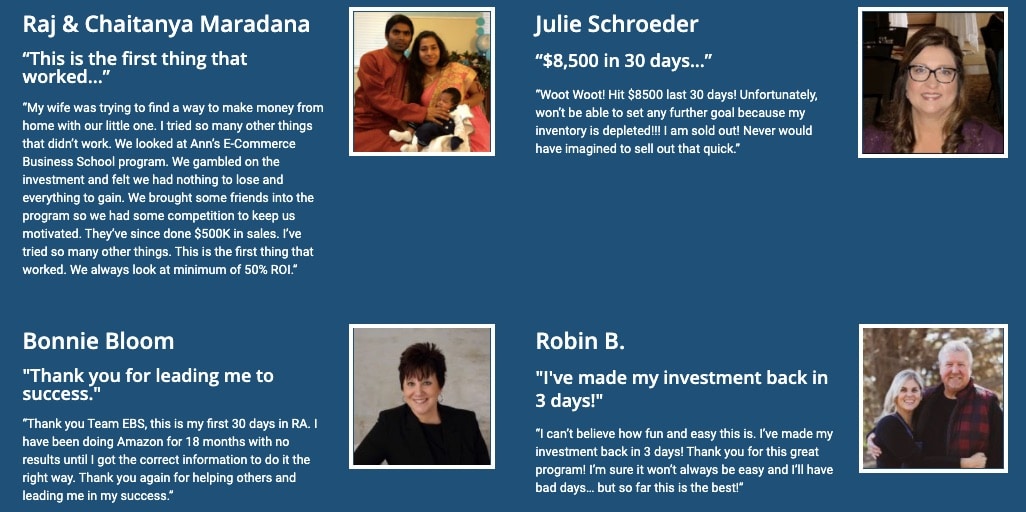
So, in our view, the best way to start a brand is using Amazon; leverage it for what it’s worth. They’ve got more customers; the best customer base on the planet that can help tell you what are your winning products.
So, you build that through Amazon, you build your financial base, then you can go to Shopify because Amazon’s already given you the proof of concept, and it’s been free to do that on Amazon.
12. In summary, how can I build an automated and borderless e-commerce business?
It goes back to those three pillars of e-commerce success, with the systems and the assets. We do this in a 90-day sprint solely focused on online retail arbitrage. They can work and build from there but in those first 90 days.
What is absolutely key is the sooner they can offset the work to someone else, which tends to be rather intimidating for most of our sellers, even highly experienced business people because they’re outsourcing halfway around the world. You’re going to outsource that work as fast as possible.
We like it to be within the first four weeks and we hold their hand and we show people how to do this. Now that someone else is doing that, the most valuable part of that business is the sourcing, looking for products
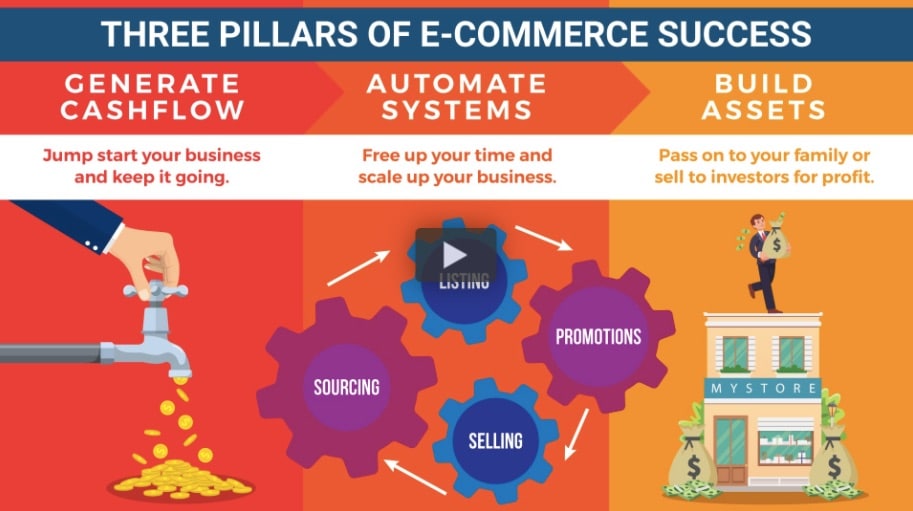
Well, if you’re doing it, you’re in the grind. You’re not focused on growing and building the business. Let someone else take over the grind. They’re going to be better at it than you anyways, with these trained VAs. That is absolutely integral.
We give the training to the VAs to use in order to do that part of the business. We have the systems in place. We teach them how to get a VA.
We had a girl who did this. She was very aggressive. She did it in 31 days. It’s just a matter of going in and getting it done.
But it’s primarily the tools that we have that they give to their VA’s to do that work. And then from there, you’re more managing a VA to help run your business for you. You continue to learn these pieces of your business. Some people learn it really fast and implement it, others, not so much. But we have had it happen in 31 days.
We say that if you follow our steps, you’ll have it done in 90 days. And we’ve got a very good success rate, graduation rate from the program.
13. In 2019, Amazon took almost 50 percent of the ecommerce market. Do you see this number increasing or decreasing? Why? And what do you think this means for other marketplaces?
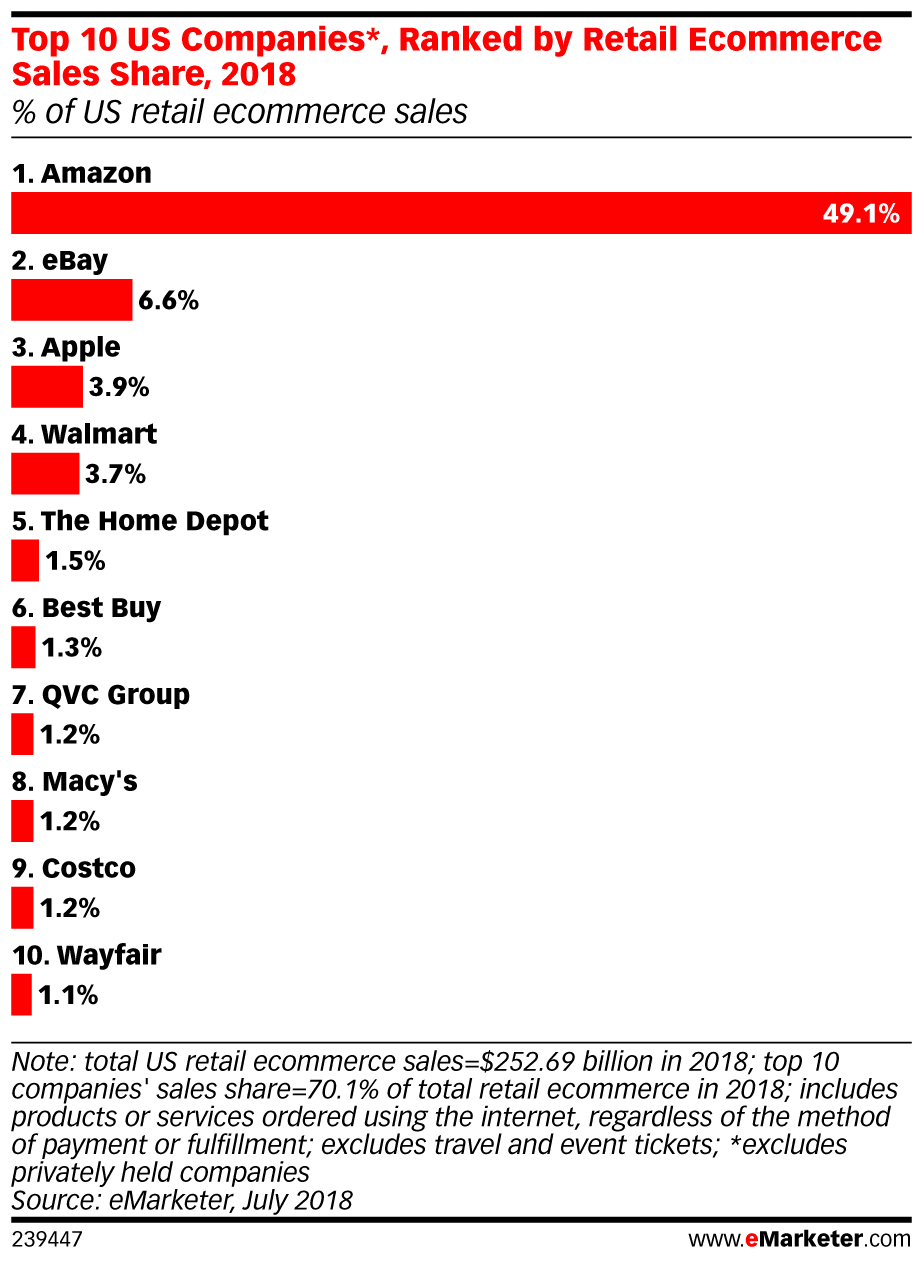
I think it’s only going to grow. I pull stats all the time, too. In 2020, they basically had a five-year compression growth pushed into one year because of COVID.
Amazon has an unbeatable brand.
The only ones that can outpace that status are in China. Alibaba and Taobao are what’s widely used in China. But the US is where Amazon started and they have the lion’s share.
They’ve outpaced, I believe, those five different stores between Target and Walmart and some other stores. That was like three, four years ago where they outpaced them in the value they have as a company. They built their infrastructure and they’re near impossible to beat. So, I only see it increasing, I do not see it decreasing at all.
About E-Commerce Business School
E-Commerce Business School is founded by Ann Sieg to help e-commerce business owners make better purchasing decisions, build relationships with wholesalers, and scale their business on multiple e-commerce platforms. They offer a ton of online training and courses that can help you start and scale your e-commerce business.
